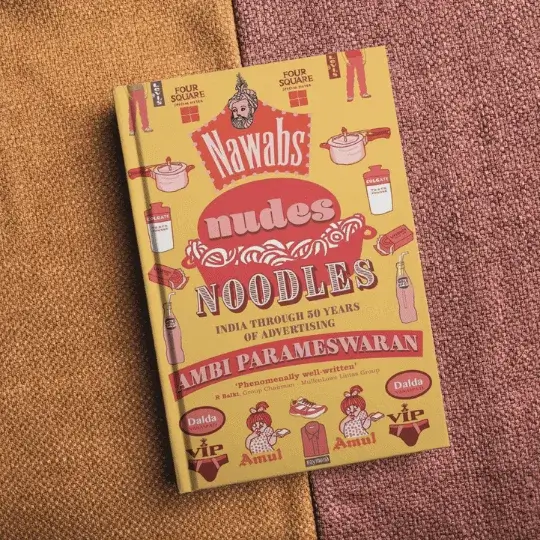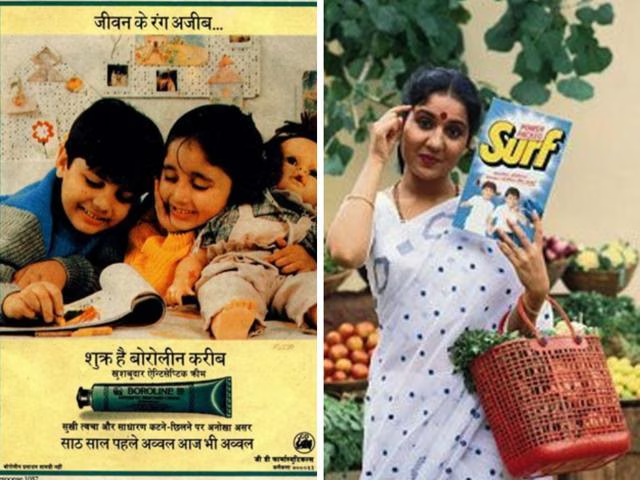Cultural Marketing Strategy Lessons: ‘Nawabs, Nudes, & Noodles’
Let’s be honest about advertising: It’s not just about selling your product. Instead, advertising is the most powerful mirror of our society. Therefore, if you want to win in the huge Indian market, you must understand the Cultural Marketing Strategy that controls every buying choice.
Ambi Parameswaran’s Nawabs, Nudes, & Noodles is much more than a book. Crucially, it is a mandatory guide to Indian culture. Indeed, it shows you the master plan behind the last 50 years of consumer behavior changes.
Clearly, this book is your blueprint if you are:
A founder aiming for a big scale.
A marketer needs to enter the market the right way.
A creative leader needs solid proof for their ideas.
Consequently, here is Intent Tale’s simple analysis.

The Core Secret: Why People Buy in India
Effective advertising always understands deep human desires. Also, it shapes society’s rules. Ambi Parameswaran shows how ads have changed the Indian family and workplace.
For instance, look at how they show men. Firstly, we saw the strong, rough Lifebuoy man. Then, we got the emotionally sensitive Raymond ‘Complete Man.’ This shows a huge shift in what Indian society values in men.
Similarly, brands quickly had to change how they show women. They moved from the ‘shy housewife’ to the successful, financially independent modern woman. In addition, the book details Pester Power. This is the smart strategy of putting children at the centre of shopping decisions. Therefore, sales shot up in areas like education and electronics.
Ultimately, by looking at famous Indian ads, the book proves one thing: Cultural marketing doesn’t just follow trends. Rather, it actively creates them.
Strategic Mandate: Therefore, if you truly want steady growth in the Indian market, you must first master the secret language of Indian advertising.
Turn Cultural Insight into Measurable Results (Our G.R.O.W.T.H. Framework)
Forget textbooks and old advice. Instead, this book gives you real-life branding lessons. Importantly, these lessons are proven by market success.
Remember the ‘Hamara Bajaj’ campaign? It sold aspiration and family feeling, not just a scooter.
Furthermore, think about ‘Cadbury’s Kuch Meetha Ho Jaye.’ This idea changed an entire category and a common cultural ritual.
Finally, notice how ‘Har Ek Friend Zaroori Hota Hai Hai’ perfectly captured the power of friendship. This drove massive brand relevance.
As a result, at Intent Tale, we use these timeless lessons in our digital work. Specifically, our G.R.O.W.T.H. Framework is built on Cultural Relevance. We take these deep emotional insights and turn them into predictable, scalable revenue systems.
Key Takeaway: Consequently, we don’t just sell products. Rather, we build deep emotional connections. Thus, we create high-conviction stories that successfully generate high Customer Lifetime Value (CLV).
Global Strategy Must Pass the Local Culture Test
“Advertising is more than selling, it’s a mirror of society.”
Advertising doesn’t just reflect culture; it actively shapes it. Therefore, the book explores several essential strategies:
The Massive Influence: Bollywood sets the pace for how ads tell stories.
The Essential Necessity: You must use humor, regional diversity, and nostalgia correctly.
The Critical Failure: Global brands fail when they simply copy-paste Western campaigns without genuine Indian adaptation.
Moreover, Parameswaran’s analysis of public debates (like the Fair & Lovely controversy) shows the power of advertising. Clearly, understanding this impact is non-negotiable for your business.

Strategic Principle: Indeed, great leaders don’t just ask for creative ideas. Instead, they nurture creativity that is culturally relevant and data-informed. Crucially, they know that listening to consumers is the only market research that truly matters.
Digital Platforms Need Timeless Cultural Marketing Storytelling Strategies
People often say, ‘traditional advertising is dead.’ However, the core truth stays the same: Digital is just a new tool. Consequently, the basic principles of branding and storytelling are permanent.
Parameswaran says the future needs three things:
Authenticity: Indian consumers demand real, relevant messages.
Storytelling: This will always set brands apart, whether it’s on TV or a mobile influencer campaign.
Adaptation: Brands must master mobile-first content while keeping their cultural truth intact.

In summary, the best advertisers don’t just follow trends. Instead, they strategically set the cultural standard.
Ready to Turn Cultural Marketing Strategy into Scalable Growth?
Ultimately, this book is the most important map for navigating India’s complex market. It proves that strategy, culture, and measurable results cannot be separated.
Therefore, if your brand struggles to get genuine market acceptance and predictable revenue in India, you have a Cultural Marketing Strategy Gap.
We specialize in B2B Cultural Strategy. Partner with Intent Tale to build digital systems that are authentic, culturally relevant, and designed for maximum ROI in the Indian market.
CLAIM YOUR FREE G.R.O.W.T.H. DISCOVERY AUDIT to quickly assess your brand’s cultural alignment and map your strategy for predictable success.
Frequently Asked Questions on Cultural Marketing Strategy
What is the main argument about advertising’s role in India?
Advertising is both a mirror and a shaper of Indian society. Brands that win in India master cultural mechanics, not just creative execution.
How does the book explain the evolution of Indian consumer roles?
It traces the shift in Male Archetypes (from Lifebuoy’s rugged persona to the “Complete Man”) and Women’s Roles (from homemaker to financially independent decision-maker).
What is the “Cultural Marketing Strategy Gap”?
The gap occurs when brands fail to achieve predictable revenue or cultural acceptance due to weak cultural relevance in their strategy.
What is the key takeaway for adapting a global strategy to India?
Cultural adaptation is essential. Global brands cannot copy-paste Western campaigns; they must localize messaging, emotion, and storytelling.
How does Intent Tale use this book’s principles?
We apply the G.R.O.W.T.H. Framework to convert deep cultural insight into predictable revenue systems, strengthening trust, retention, and lifetime value.
















